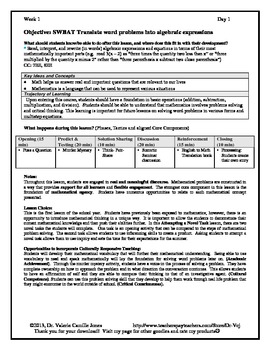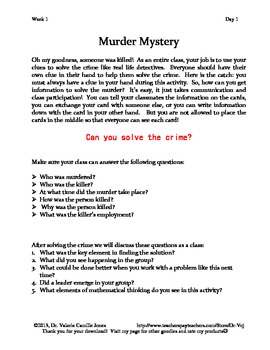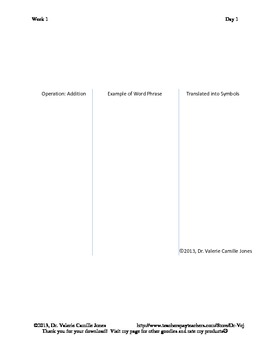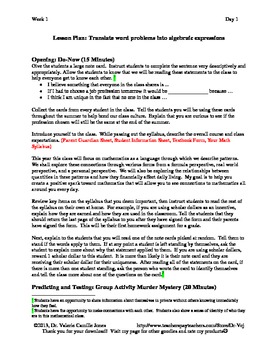Detailed Lesson Plan: Do You Speak Math? - Back to School (Common Core)
- PDF
Description
Are you starting out the year teaching a Pre-algebra/ Algebra class? Do you just want your learners to be able to speak mathematically no matter what grade level you teach?
Here is a very detailed lesson plan to help you begin! This document contains scripted lesson dialogue, probing questions, and detailed instructions to help you mirror the lesson in your own classroom. It is perfect for a new math teacher who needs guidance or a seasoned math teacher looking for innovative ways to introduce content. All problems and activities are aligned to common core standards and conceptual learning.
*PLEASE DOWNLOAD THE FREE PREVIEW FOR A SNAP SHOT OVERVIEW OF THE LESSON.
This lesson focuses on mathematical thinking, problem solving, and using mathematical language (greater than, difference, of, etc).
This plan is developed for a class period of 1 hour and 30 minutes, however, you can separate it into two lessons or more to fit your time constraints. The lesson plan includes all supplementary material and resources.
Students begin with understanding the rules of the class, move onto a murder mystery activity applicable to math problem solving, and end out the class creating their own English to math translation book.
Surprise your learners with these fun and engaging activities!





